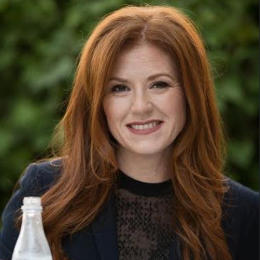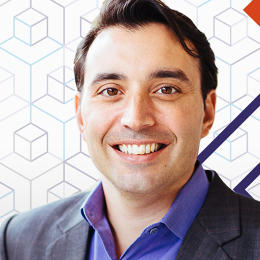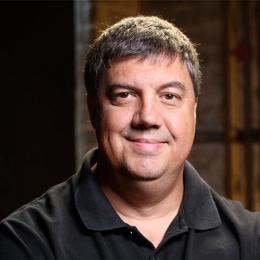8 ENTREPRENEURS ON THE MAGIC MOMENT WHEN THEY KNEW THEIR STARTUP HAD MADE IT
Starting a business is not for the faint of heart.
According to the Small Business Administration, only about half of all new businesses will survive for five years. For those who do stick it out, dreams of getting rich quickly will be supplanted by the reality that sweat equity doesn’t translate to billions of dollars overnight. In fact, one study of 158,000 startups found that those businesses that did survive experienced plenty of growing pains as they became established.
What does it take to get a business from that nail-biting startup phase to one in which it’s an established enterprise? Gus Tai, a general partner at Trinity Ventures, who has spent the last 15 years leading investments in startups from Zulily to Bulletproof (but passed on LinkedIn), says it’s not always a clearly defined moment.
“Even though I often cite the saying, ‘To best understand day and night, one should study dusk and dawn,’ I’ve never applied that approach to startups,” he tells Fast Company. Tai believes that once a business is within a year of achieving sustainable profitability and knows that it will get there, it’s a turning point. “The company may not choose to become profitable, but it has the choice to become profitable,” says Tai. “That choice is the key.”
For founders, the moments at which they move from startup to big time are as unique as their businesses. Some gauge by the metrics of revenue or active users, and others by more squishy milestones, such as a new hire who they didn’t know previously. Still others hit the moment even before launch. Here’s what they told us in their own words.
Adda Birnir, founder and CEO of Skillcrush (launched August 2012)

I first had an inkling that things were going to be okay when we tripled our revenue in one month. It was January 2014 and we went from barely scraping by at about $12,000 to $15,000 in revenue a month, to all of a sudden doing $44,000 in one month.
I was, of course, blown away at the growth, but I still felt like it wasn’t a sure thing. What if it was just a onetime fluke? At the time an adviser of mine told me that this meant I had a real business on my hands. I remember it so clearly, he said, ‘I know you may not think so yet, but trust me, I’ve seen this enough before to know that this is a real thing.’ I think it took me another eight to nine months of continued growth and then another month where we doubled our revenues (at that point going up to $120,00 a month) to really believe it.
I should also mention that it took a solid 1.5 years to get to that first $44,000 month. Sometimes I look back on that time and wonder why I kept going, and I really think I can only attribute it to two things: Blind stubbornness and the fact that even though we had very few users, the users we had loved the product.
Kara Goldin, founder of Hint (launched May 2005)

When I started hearing from conference organizers that Coke and Pepsi executives requested that I not be on their panels, I knew Hint was on to something big! Their concern was that the audience would get focused on ‘the wrong things’ versus ‘their innovation.’
Leading a truly healthy beverage company among a sea of soda companies who are essentially selling an addiction to sugar and sweeteners is rough. Hearing that they are going out of their way to block the public from understanding health by controlling what the audience hears only makes me realize that the soda giants are frightened and threatened by Hint and health as a message, since that is not what they can say.
Chris Taylor, founder and CEO of Square Root (launched January 2006)

When we hit 10 people, our culture broke down overnight and we had to figure out how to redefine the basics of the company and what we wanted for the future. Once we got those core building blocks in place and continually reinforced them, we had our fast moving, team-oriented, startup mentality back.
It was an important lesson for me on how much care and effort it takes to scale the culture with the business. Are we a startup? Our team will tell you we’re just getting started. We’re out to win our software market by helping retailers manage their stores, and it’s my job to make sure we continue to have that startup mind-set, no matter how large we grow.
Rod Favaron, president and CEO of Spredfast (launched March 2008)

One day I woke up and found myself thinking a year out versus 90 days. At about the same time, a customer asked us for a three-year contract. That’s when it hit me: This was a real market and we had a product that had lasting value.
Vijay Ramani, CEO of Totspot (launched 2014)
Totspot has always been focused on helping moms sell and buy their kids’ outgrown clothes. But our big aha moment was when we started to see the community bursting beyond selling and buying kids’ clothes.
As we crossed the 100,000 active user mark (in May 2015), we started to observe deeply engaged consumers sharing their lives together. That’s when we became more determined than ever to support this commerce-enabled, mom-to-mom community. We added product features like messaging and commenting tools that allowed moms to communicate more easily.
Today, our top active users spend over two hours daily in the app. Since that watershed moment, we’ve continued to see over 100% growth in our community, and the engagement is getting stronger.
André Walters, founder and CEO of Yuno (launched September 2015)
My magic moment was December 2013.
After weeks of attempting to put together an investor pitch deck with Myron Tay, my CTO (something neither he nor I had ever done before, by the way), we finally got our first major injection . . . $200,000 from a family member of Myron’s that saw and believed in what my vision was for Yuno.
That would be followed up later that month with a $100,000 investment from my mother and father-in-law, both of whom simply believed in me and wanted to support me.
With money in our account, things got very real. We now had investors, and it was up to me to lead the venture to greater value to reward those who took a chance on me. I’ve been on a mission to prove my early investors right ever since.
Catherine Havasi, cofounder and CEO of Luminoso (launched December 2010)

The big moment for me was when the first person joined the company who I had no part in hiring. The moment when you literally say to someone who is working at your company, ‘Oh, nice to meet you,’ and they are already working there, and you had nothing to do with bringing them in.
I remember it like it was yesterday. I had been on the road at a trade show and meeting with customers, and when I came back, there was someone making coffee in our kitchen who worked there who I had never met. It’s a really interesting feeling, and then you realize, oh, this is not a tiny thing anymore. This is the real deal.
Andrew Yang, founder and CEO of Venture for America (launched August 2011)
For me, it’s not so much a numbers thing as it is an evolution of customer perception. When people no longer need to be sold or even educated, that’s when you know you’ve made it. We’re heading down the same path with Venture for America as more of our Fellows go on to do great things. I honestly think we are there, but I don’t want to get ahead of ourselves. People react to the words Venture for America completely differently today than they did in 2012 or 2013. But I don’t want to sound overly self-satisfied as we’re still climbing.
[Photo: Flickr user Nomad Tales]



